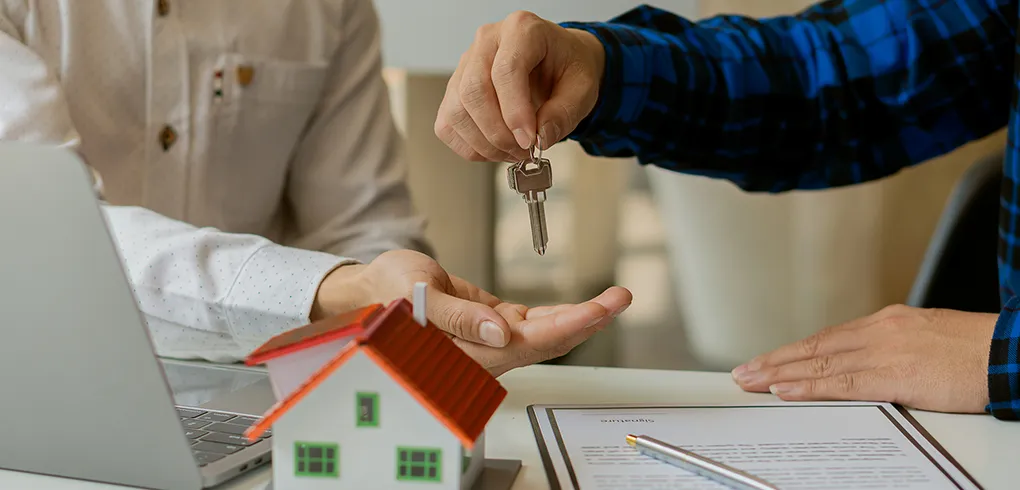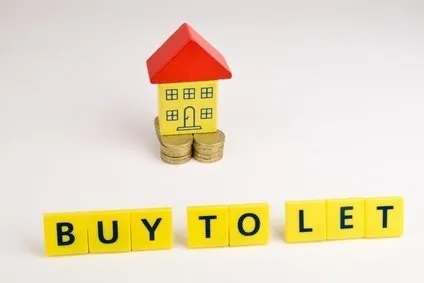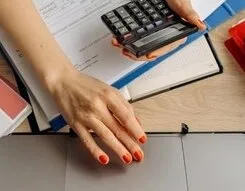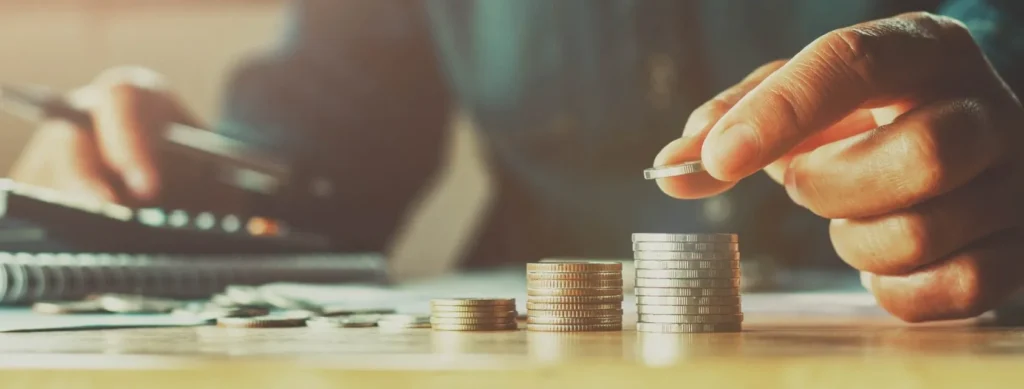Find out how much you need for a buy-to-let mortgage deposit. We also explain how buy-to-let mortgages work, how much you can borrow and more.

Buy-to-Let Mortgage Deposit: How Much Is It?
Buy-to-Let Mortgage Deposit
Buying a property to rent can be a good way to make money to use as a general source of income, top up your salary or even to invest in further properties so you can build your property portfolio. As soon as you find suitable tenants, you can begin to generate income from your investment.
Getting a buy-to-let mortgage is similar to getting a standard mortgage. However, there are some key differences, especially in terms of the buy-to-let mortgage deposit. Read on for all the information you need about buy-to-let mortgage deposits to help you decide if this kind of investment is right for you.
Contents
What's a Buy-to-Let Mortgage?
A buy-to-let mortgage is a loan for people who want to buy a property to rent out to tenants rather than live in it themselves. The amount you can borrow will usually depend on the rental income you expect to earn, although other income you have may also be considered.
Buy-to-let mortgages typically require larger deposits than standard residential mortgages and the interest rates are usually higher. Our buy-to-let rental calculator will help you determine how much rental income you can expect from your buy-to-let property.
How Do Buy-to-Let Mortgages Work?

With a buy-to-let mortgage, you usually have the option of an interest-only or repayment mortgage. However, interest-only mortgages are more common with buy-to-let properties. With an interest-only mortgage, you’ll only pay towards the loan’s interest each month and won’t actually be paying off what you’ve borrowed until the end of the mortgage term.
For landlords, interest-only means reduced monthly payments that allow them to maximise their rental earnings. Rental income can be used to pay off the monthly interest. If you take out an interest-only, buy-to-let mortgage, your lender will ask to see evidence that you can pay off the full amount at the end of the mortgage term. This is usually via a repayment vehicle such as selling the property or how much you earn and save in rent.
How Much Can I Borrow for a Buy-to-Let Mortgage?
How much you can borrow on a buy-to-let mortgage depends on how much rental income you expect to make. The lender will need to know this information to determine whether their investment is safe. Mortgage lenders will usually want your rental income to be higher than the mortgage repayment by 125% – 145% depending on your tax bracket and whether you want to purchase the property as a private landlord or through a limited company.
As a result, it’s rare to find a mortgage lender who’ll offer a 90% or 95% loan-to-value, buy-to-let mortgage. The maximum LTV for most buy-to-let mortgages is 75%. Do some research or contact a local letting agent to get an idea of the expected monthly market rental – i.e. how much you can let it for each month. You can then calculate your how much you can borrow, subtract your expenses such as mortgage payments and management fees and then work out your yield.
How Much Deposit for Buy-to-Lets?
The minimum deposit for buy-to-lets is typically around 25% of the property’s purchase price for a buy-to-let mortgage. However, some lenders are prepared to accept a 20% deposit. As with a residential mortgage, the bigger your deposit, the less you’ll need to borrow and pay back and the less you’ll pay overall in interest.
You’ll have larger monthly payments if you only put down the buy-to-let minimum deposit. If you are looking to purchase a property as a House of Multiple Occupancy (HMO), the landlord may ask you to provide a larger deposit. Check our buy-to-let mortgage calculator to get an idea of how much you can borrow and how much deposit you’ll need.
What Type of Buy-to-Let Deposit Will Lenders Accept?
Every mortgage lender has its own criteria for a buy-to-let mortgage deposit, but they frequently include the below.
Personal savings
Every buy-to-let lender will accept a deposit that comes from your personal savings as long as you can prove how you built up this deposit and that it’s from legitimate sources such as your personal income.
Sale of investments
Many lenders will accept deposits that come from the sale of your investments – e.g. stocks and shares, bonds, wines etc. You’ll have provide cashflow statements showing the date and time of each transactions and a financial statement confirming the value of your investments.
Sale of assets
You can use money made from the sale of assets – e.g. jewellery, art, cars, etc. as a deposit on for a buy-to-let mortgage. You’ll need to provide the lender with evidence of the sale to show where the money has come from.
Sale of property
Lenders will accept proceeds from the sale of a property as a deposit. For example, you may sell your existing residence and move into a rental or with a partner, then use the money from the sale to purchase a rental property.
Raising capital from another property
Landlords with multiple rental properties can remortgage one or more of their current rental properties to release equity they can use as a deposit for a new mortgage.
You can also convert the mortgage on your existing residence to a buy-to-let mortgage, releasing equity from it at the same time. You can then use this money as a deposit on your new mortgage for your new main residence. This is called let to buy.
Bridging loan
If you need to secure finance quickly for a property that requires renovation before you can rent it out, you may be able to get a bridging loan. The amount you can borrow will depend on how much the property will be worth once you’ve completed the work. You can use bridging finance to purchase the property and pay for the renovations.
Builder deposit incentives
A few lenders may accept a builder’s deposit for a buy-to-let mortgage when it’s part of a new development. However, the majority of lenders will want you to cover the deposit another way and won’t consider a builder’s deposit a viable source.
Gifted deposit
Some buy-to-let mortgage lenders will accept gift deposits from a close relative. You will need proof that the donor of the gifted deposit doesn’t expect you to repay them, or that they expect to have any claim on the property.
Personal loans
Some lenders will allow you to use a personal loan to fund part of a deposit for a buy-to-let mortgage, but not all of it. In most cases, you’ll be able to use credit to finance around 5% of the total mortgage and use your own money to fund the remainder of the deposit.
Concessionary purchases
A concessionary deposit is a buy-to-let deposit scheme where a family member sells a property to you at a discount which can be used as a deposit for a buy-to-let mortgage.
Providing Proof of Your Buy-to-Let Mortgage Deposit

Most mortgage lenders will want you to provide evidence of how you funded your buy-to-let mortgage deposit to ensure it’s come from a legitimate source. You may have to provide copies of bank account statements, contractual agreements, a proof of deposit letter or other relevant documentation. Failing to provide sufficient proof of where your buy-to-let deposit has come from could mean that your application is rejected.
What Interest Payment Options Are There on a Buy-to-Let Mortgage?
There are many different buy-to-let mortgage products. The interest rate and your monthly payments will depend on the type of mortgage product you choose.
Standard variable rate
SVR (standard variable rate) mortgages tend to be a mortgage lender’s default plan. This is what they’ll usually move your mortgage onto when the introductory deal ends. They’re typically higher interest rates and may be among the more expensive mortgage deals available. You can start to arrange a remortgage on your buy-to-let property from 6 months before the end of your introductory deal to avoid going onto your lender’s SVR.
Discounted variable
Discounted variable mortgages operate at a fixed rate below the mortgage lender’s standard variable rate. However, the discounted rate will move in line with the standard variable rate, so you may still experience the same increases. The discounted rate usually only lasts for around 2 years, after which you’ll be moved onto the standard variable rate.
Fixed rate
Fixed rate mortgages usually last from 2 – 5 years. Although we’re starting to see longer term fixed rate buy-to-let mortgages coming onto the market with 10 year fixed periods. They offer stability and security as your interest rate is fixed, meaning you’ll pay the same amount each month.
However, the fixed rates tend to be higher than variable rates and you won’t benefit from any drops in interest rate. You’ll move onto your lender’s standard variable rate when your fixed rate ends unless you remortgage onto a new deal.
Tracker
Tracker mortgages have variable rates, which means your interest payments could go up or down. With these mortgages, the interest rate is above the Bank of England’s base rate so your monthly payments will go up if the Bank of England raises its interest rate, but you’ll also benefit from lower payments if the Bank of England base rate drops.
What Do I Need to Consider Before Getting a Buy-to-Let Mortgage?
As a landlord, you’ll incur other costs on top of your monthly interest payments, which you’ll need to budget for when considering a buy-to-let mortgage.
Letting agent fees
If you use a letting agent to manage your property, you’ll be required to pay their fees. Letting fees for the management of a rental property are usually between 10% and 17% of the rental income per month. If you only need one-off letting services, you’ll normally have to pay the equivalent of a month’s rent.
Landlord insurance
Landlord or buy-to-let insurance covers your property, contents and landlord liability. Most mortgage lenders will require you to have buildings insurance covering your property for fire and damage. You aren’t required to have contents insurance, but it’s worth taking out to protect your furniture, curtains and carpets. Landlord liability covers you if one of your tenants or a visitor is injured or dies on your property.
Stamp Duty
When buying a buy-to-let property over £40,000, you’ll need to pay an additional 3% on top of the standard Stamp Duty Land Tax, equivalent to theStamp Duty on a second home. Take a look at our Stamp Duty calculator to get an idea of how much Stamp Duty you’ll have to pay.
Maintenance
As the property owner, you’re responsible for covering the cost of repairs to the property. This may include fixing structural issues, problems with the plumbing or heating and any appliances that belong to you.
Income Tax and Capital Gains Tax
The rent you receive from your tenants is income so you must pay Income Tax on it. Your tax band will determine how much you’ll have to pay. You must also pay Capital Gains Tax if you sell an asset for a profit, including your buy-to-let property.
Non-tenanted periods
It’s not unusual for a buy-to-let property to sit empty for a time while you’re waiting for new tenants to move in. You’ll still have to keep up with your monthly payments though, so you may need to put money aside to cover this.
What Happens at the End of a Buy-to-Let Mortgage?
When your existing interest-only mortgage comes to an end, you’ll have to pay off the remaining cost of the property. This is often done via a repayment vehicle like selling the property and is where most landlords will make a profit. However, if house prices have dropped since you bought your buy-to-let property and it’s worth less than what you paid for it, you’ll end up with a loss. You’ll be expected to cover the remainder with your own money.
Can a First Time Buyer Get a Buy-to-Let Mortgage?
First time buyers can get a buy-to-let mortgage, but the provider will probably have stricter requirements as they’ll take on more risk. As a first time buyer, you might have to provide a bigger deposit and meet extra affordability criteria.
If you purchase a buy-to-let as a first time buyer, you’ll only have to pay Stamp Duty at the standard rates, not the additional ones. However, you won’t qualify for the first time buyer Stamp Duty exemption.
Is It Possible to Get a Buy-to-Let Mortgage with Bad Credit?
It’s possible to get a buy-to-let mortgage if you have bad credit, but you may find your choices of lender and mortgage products are limited. Lenders want to see that you’re a reliable borrower and will calculate a credit score based on your mortgage application and credit report information. If you’ve had credit issues in the past, this doesn’t automatically mean that your mortgage application will be rejected. The lender will want to look at the type and severity of the issue, when the issue occurred, the cause of the issue and whether it’s likely to happen again.
The better your credit record, the more likely you are to be accepted for a buy-to-let mortgage and qualify for a competitive deal. Lenders are also more likely to accept an average credit record if you can put down a generous buy-to-let mortgage deposit.
To find out more about buy-to-let mortgage deposits or other options available to help you purchase a buy-to-let property, get in touch with us today on 023 8235 2300 or submit an online enquiry.
Get in touch with our experts
Book an appointment with an adviser today and we’ll help you work out which mortgage deal is best for you and your requirements.
Read More Mortgage Guides
See also
Budget speculation
FCA Section 165 Information Request Should Include Estate Agents
Should a Down Valuation Be Seen as a Negative or a Reflection of the Current Market Value?
April Mortgages’ 100% Fixed Rates
The FPC’s 15% Flow Limit is Past its Sell-by Date
What Is Buy Now Pay Later and What Does It Mean for My Mortgage Applications?
Trump Tariff Madness
FCA Blue Sky Thinking on Pensions & Mortgage Deposits

